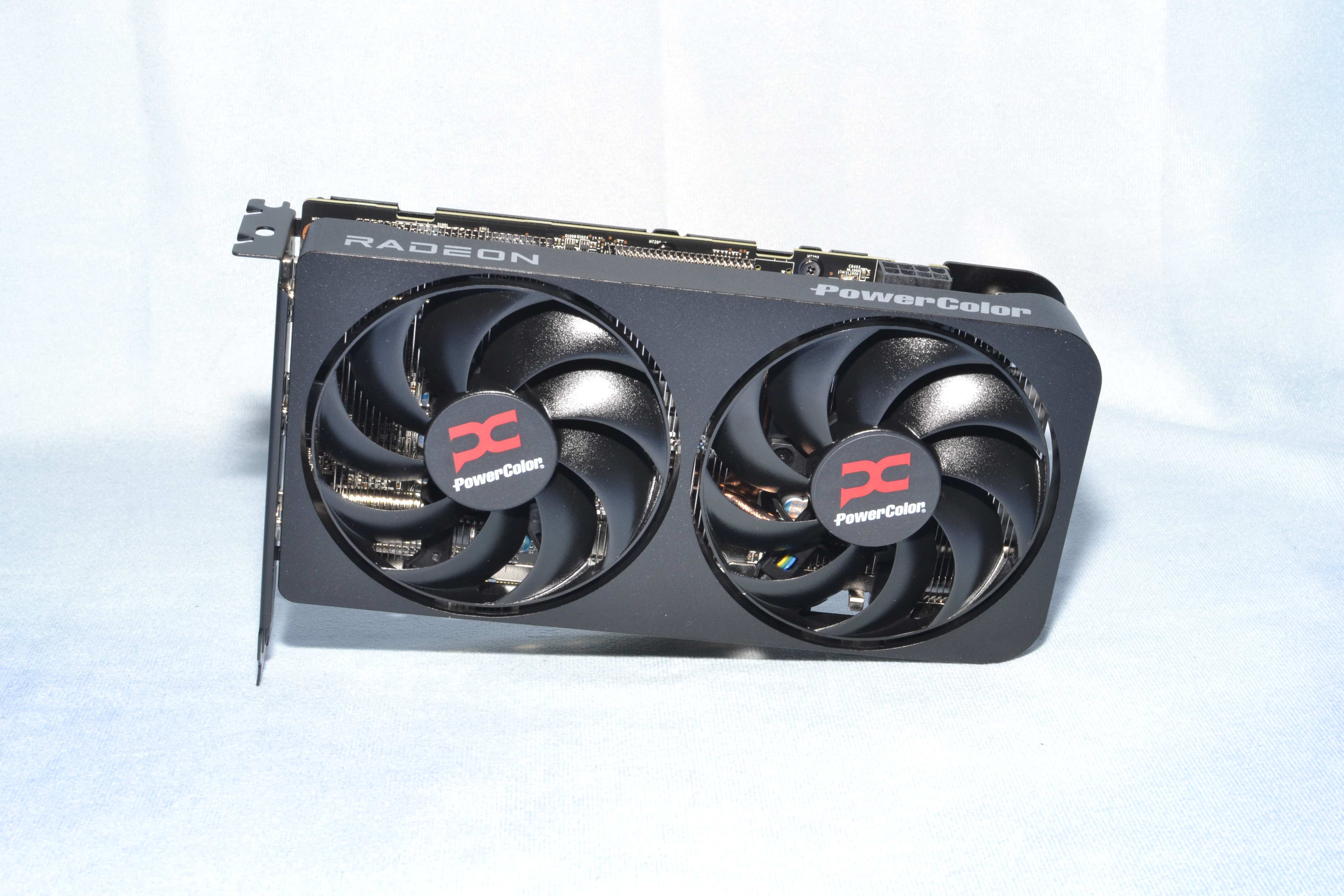Why you can trust Tom's Hardware
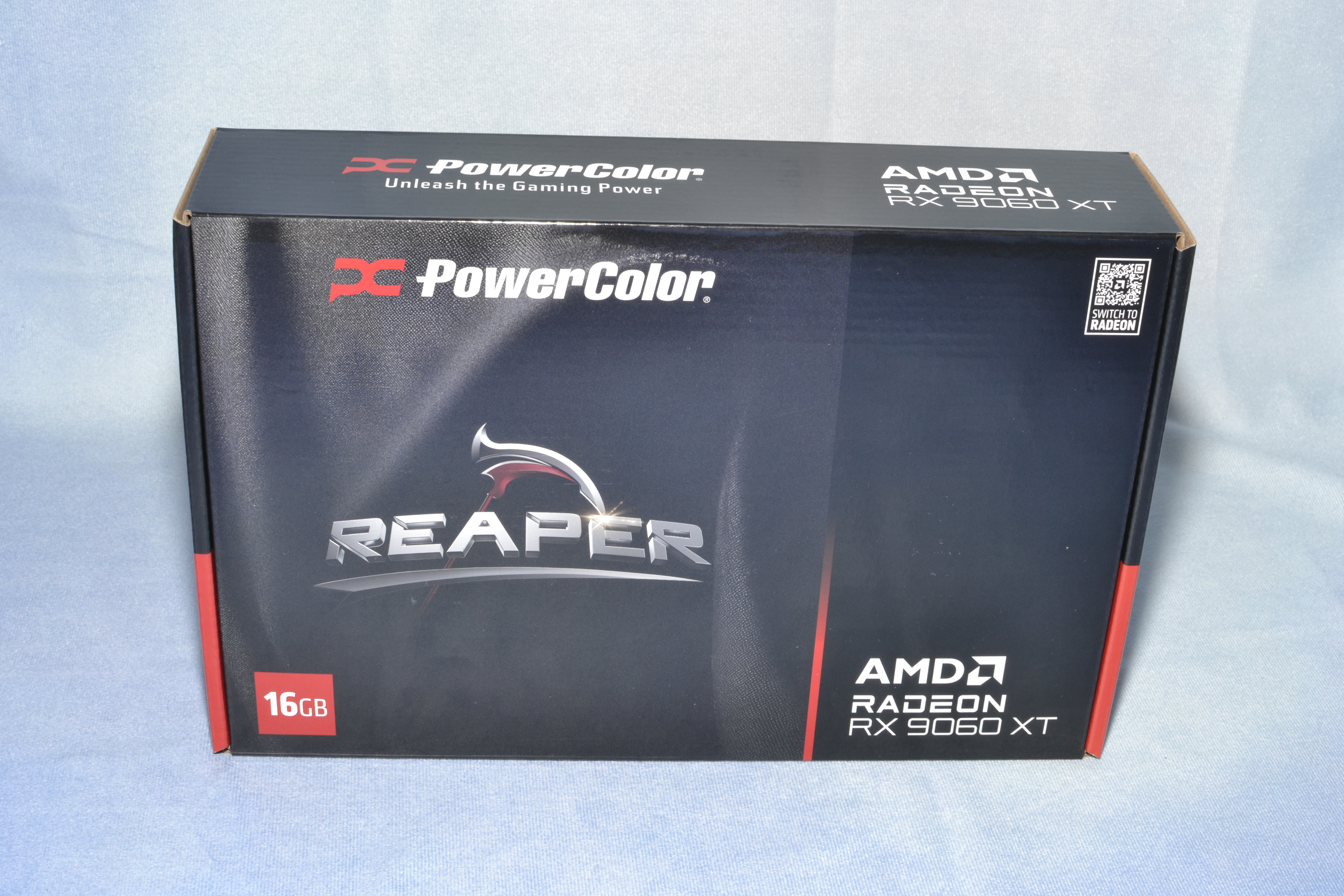

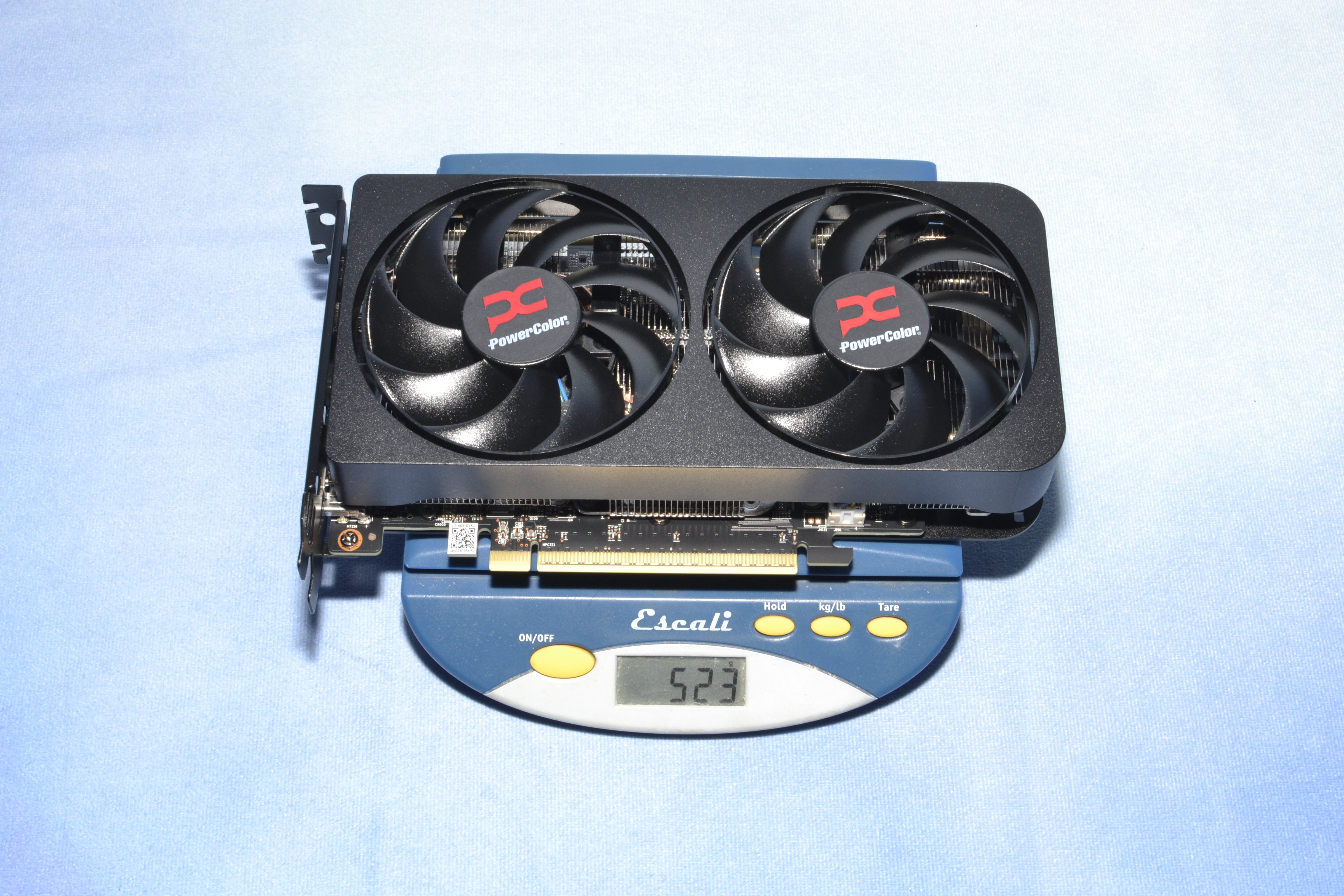
AMD sent us a PowerColor Radeon RX 9060 XT 16GB Reaper card for the launch review, and it’s as close as we’re likely to get to “reference” performance. The Reaper line was introduced by PowerColor with the RX 9070 XT / RX 9070 launch and represents a baseline model. Things like cooling, aesthetics, RGB lighting, and thermals are all tied into the card design, while the out-of-the-box performance usually falls within a relatively narrow window. Few graphics cards come with more than a few percent overclock by default, and while you can certainly push some models further than others, that’s true of any modern GPU.
Despite the basic design, the 9060 XT Reaper still appears to have a modest overclock. PowerColor lists a 2620 MHz Game Clock, which is 90 MHz higher than AMD’s official reference clock. The boost clock also gets a modest bump, up to 3230 MHz from the reference 3130 MHz. However, it’s important to note that boost clocks represent the maximum clock from the GPU on AMD’s RDNA 4 cards, where Nvidia’s boost clock tends to be a conservative average clock speed. AMD’s Game Clock sort of serves a similar purpose, except it’s even more conservative than Nvidia’s approach. Average clocks, according to our testing, end up at around 2950 MHz — 330 MHz higher than the rated Game Clock and 280 MHz below the maximum boost clock. YMMV.


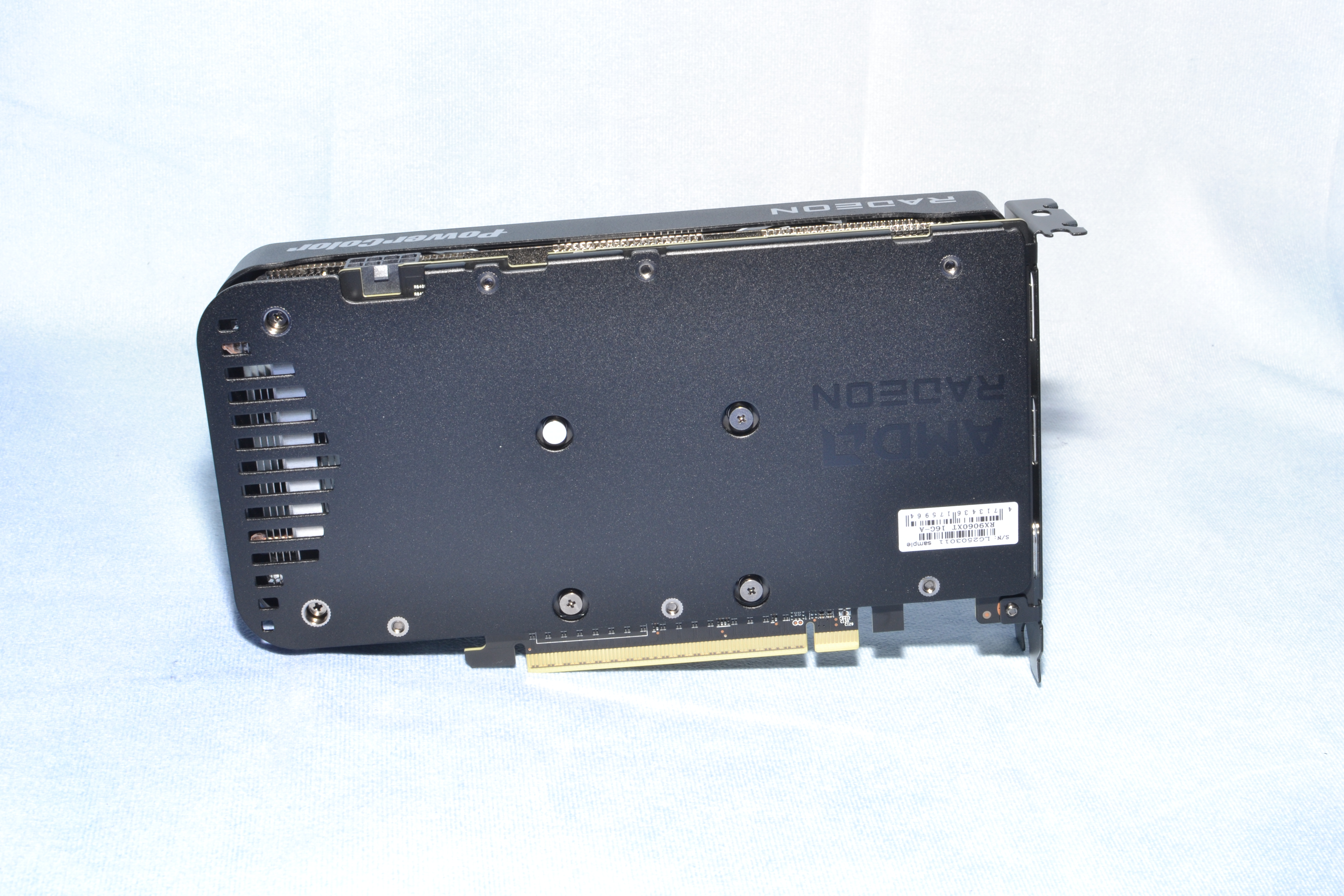
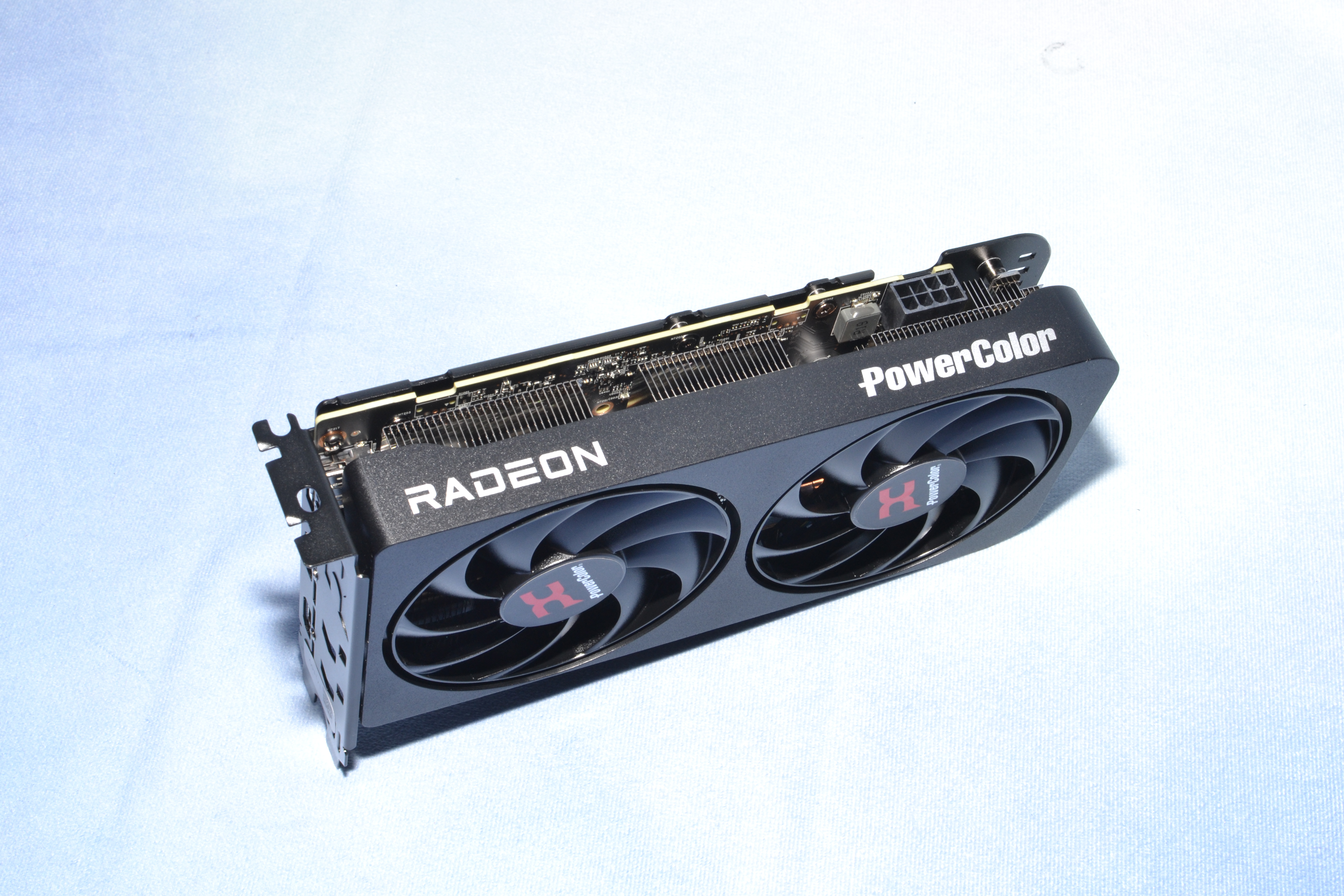
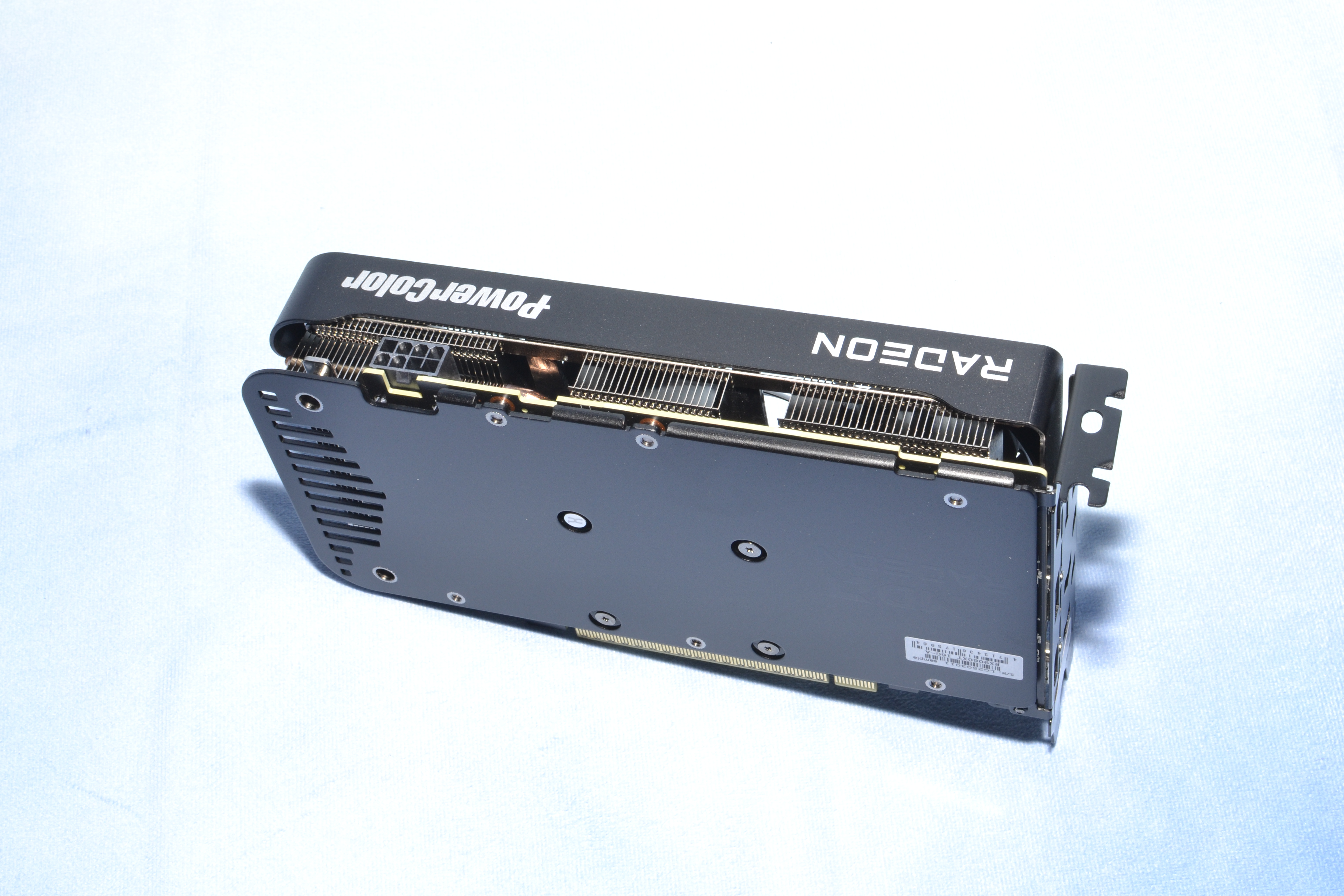
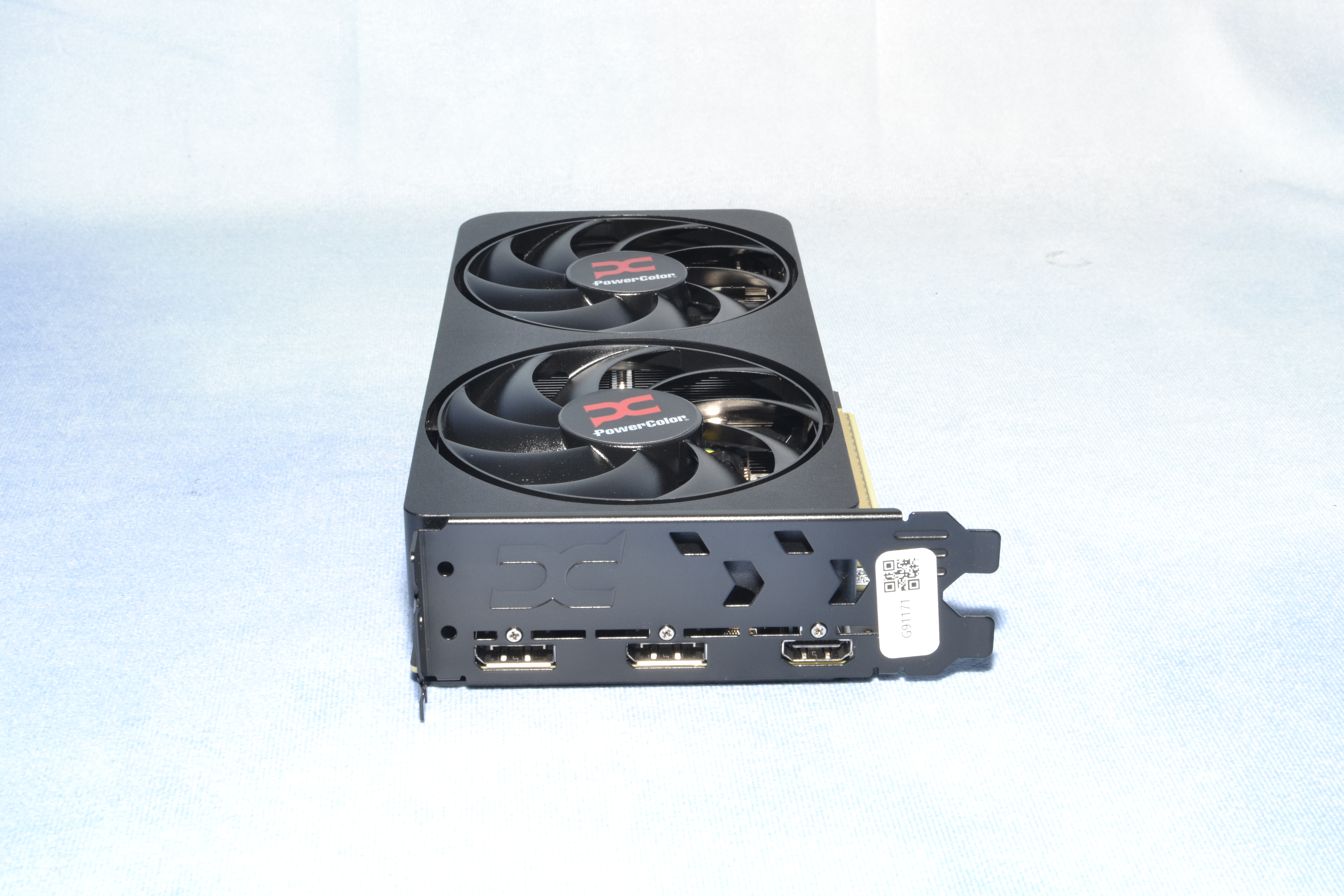


The Reaper card has a compact form factor, measuring 200x100x39 mm. It comes with two custom 87mm fans that have integrated rims, which helps improve static pressure and airflow. With a 160W rated power use, such a design shouldn’t have much difficulty, though larger triple-fan cards would naturally be able to run even cooler and quieter — but those wouldn’t fit in some of the places where this dual fan Reaper can go.
In a slight change of pace from the usual, the Reaper comes with just three video ports: two DisplayPort 2.1a ports and a single HDMI 2.1b port. The DP2.1 ports are rated for UHBR13.5, so a maximum bitrate of 54 Gbps compared to Nvidia Blackwell’s UHBR20 and 80 Gbps. The HDMI port only offers 48 Gbps by comparison, though both are capable of driving a 4K 240Hz monitor with DSC (Display Stream Compression) enabled.
Interestingly, while Nvidia opted for a PCIe 5.0 x8 electrical link on its RTX 5060-class GPUs, AMD’s Navi 44 and the RX 9060 XT still get the full PCIe 5.0 x16 electrical and physical connectivity. AMD’s previous generation RX 7600 XT / RX 7600 had PCIe 4.0 x8 links, so there’s up to four times as much link bandwidth for the slot this round. It doesn’t seem like that’s something that would really be necessary, but for older systems that only support PCIe 4.0 or even 3.0 speeds, the full-size x16 connector could be beneficial.
As we’ll likely see with most RX 9060 XT cards, PowerColor uses a single 8-pin power connector, located toward the rear of the card. There’s no need for a 16-pin connector here, or even dual 8-pin connections, as a single 8-pin connector can supply up to 150W of power. The PCIe slot provides for another 75W, which should be sufficient for the vast majority of users.
- MORE: Best Graphics Cards
- MORE: GPU Benchmarks and Hierarchy
- MORE: All Graphics Content
Get Tom's Hardware's best news and in-depth reviews, straight to your inbox.
Current page: PowerColor Radeon RX 9060 XT Reaper 16GB
Prev Page Introducing the AMD Radeon RX 9060 XT 16GB Next Page AMD Radeon RX 9060 XT 16GB test setupTom's Hardware is the leading destination for hardcore computer enthusiasts. We cover everything from processors to 3D printers, single-board computers, SSDs and high-end gaming rigs, empowering readers to make the most of the tech they love, keep up on the latest developments and buy the right gear. Our staff has more than 100 years of combined experience covering news, solving tech problems and reviewing components and systems.
-
thestryker While I still feel like there should have only been a single 9060 XT the 16GB is definitely what passes for as a good deal price v perf despite the upsell pricing. Hopefully over the lifetime of the card MSRP will be hit.Reply -
JamesJones44 Feels like if one is going to step up to a 16 GB model, the 5060 Ti looks like a better choice for $40 more. Otherwise one is just looking to save $90 by sticking with the 8 GB model.Reply -
Alvar "Miles" Udell AMD showing again why they don't care about gaining market share: they have a product that can compete with Nvidia, but they don't price it anywhere near what it would take to get people to buy it if they're already Nvidia users.Reply -
palladin9479 I was hoping to see a 9060 XT 16 vs 8 GB charts the same as the 5060 Ti has a way to see where the cutoff is instead of the misinformation that gets spread. It's also entirely what the market cost is gonna be at.Reply -
virgult Reply
That's because it cannot compete. It's a bit worse, for a bit more power, if you're a gamer. Non-gaming workloads run abysmally bad compared to Nvidia, due to AMD's neglect of HIP, ROCm, and any effort to make pro workloads run well.Alvar Miles Udell said:AMD showing again why they don't care about gaining market share: they have a product that can compete with Nvidia, but they don't price it anywhere near what it would take to get people to buy it if they're already Nvidia users.
This is not a competitive product, that's why it should be priced way lower. -
tvargek but don't forget 5060ti has lower performance on older MB's cause of narrow lanes and all those hoping to upgrade their older system with 5060 series should also buy new MB+CPU+MEM to gain full advantage of 5060tiReply -
palladin9479 Replytvargek said:but don't forget 5060ti has lower performance on older MB's cause of narrow lanes and all those hoping to upgrade their older system with 5060 series should also buy new MB+CPU+MEM to gain full advantage of 5060ti
Ehh that really depends. PCI-E bandwidth, which is what you are talking about, is only involved when data gets transmitted from system RAM to GPU VRAM. When you have plenty of VRAM then you really don't need to worry about that, if you are in a VRAM constrained situation which requires graphics resources to be swaped in and out of system RAM across the PCIe bus. PCIe 4 x16 slot is 32GB/s one way, PCIe 5.0 x16 is 64GB/s one way. System memory is much faster and therefor not the bottleneck. Honestly if someone is in such a situation that are you swaping texture data across the PCIe bus, they are already having a bad experience and need to either turn down texture resolution or upgrade to a newer card. -
GravtheGeek I had no problem getting the XFX model of the 16 gig for MSRP ($350) via newegg. Lots of $350 models out there. If you live near a Microcenter it's even better selection.Reply
One major thing to note about the powercolor reaper: it's only 200mm x 39mm for a 16 gb version. That makes it one of the best cards for some smaller SFF builds out there for the money.
